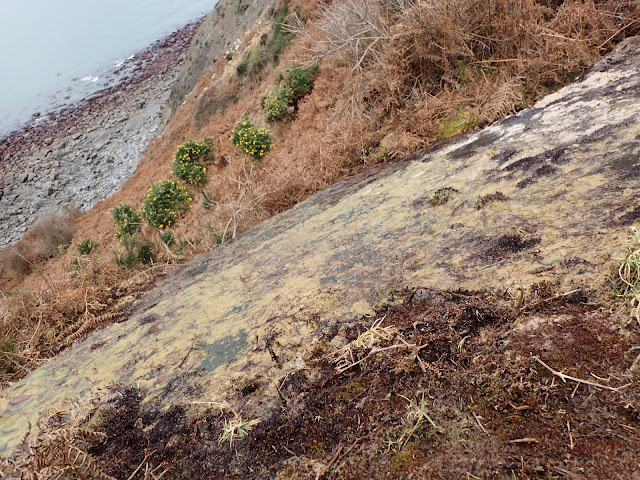Monkstone - Waterwynch
There are a couple of small bays between Waterwynch and Monkstone, north of Tenby, which are only accessible for an hour or two on the lowest spring tides. I only managed five minutes poking about whilst on a family walk there last week, but it was long enough to collect an interesting looking Bryum from wet ledges on the mudstone cliffs at the back of one bay. No camera with me so no in situ photos, but the cushions look exactly like the B. gemmiparum photographs in Michael Luth's flora. The leaves are a good fit too, with the same snub-nosed apex, and a wide costa (99 microns) at the leaf base. Unfortunately no bulbils on the tuft that I collected, so it remains to be seen how it will be refereed ('looks interesting but can't be confirmed without bubils' - Sharon), but I think Bryum alpinum is ruled out on costa width amongst other characters.
I went back a couple of days later, but the tides were no longer big enough for easy access. I went round to the Saundersfoot end of the beach instead, where a new sub-population of Philonotis rigida - the seventh on this section of cliffs - was some compensation.








